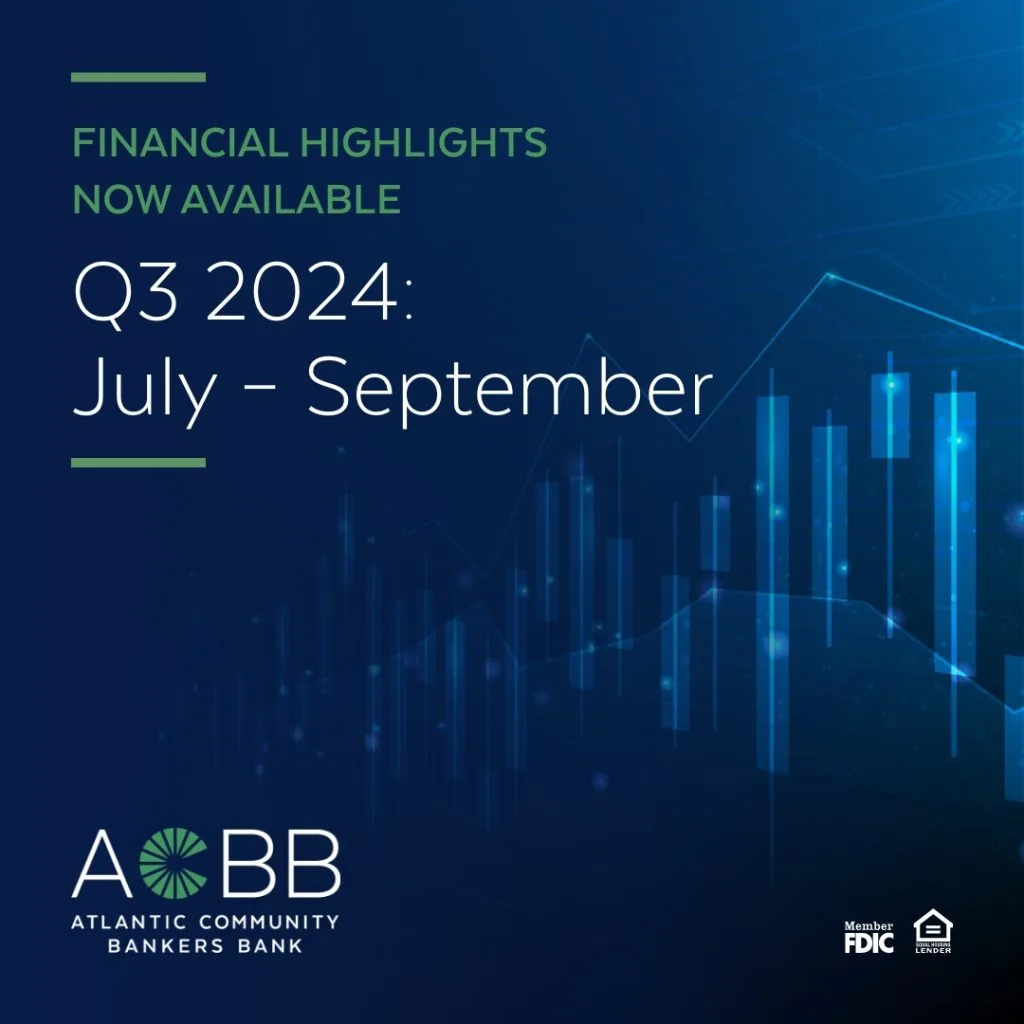Newsroom
Financial Highlights, Newsroom
Q3 2024 Financial Highlights
November 6, 2024

Summary
For the nine months ending September 30, 2024, net income was $5.2 million, an increase of $1.2 million, or 30%, in comparison to the same period in 2023. Average gross loans for the same period show a 17% increase, driven by 2023 ending with strong loan growth, in addition to the modest growth in the current year. The continued elevated rate environment continues to boost interest income. With that, also came higher funding rates, which management continues to actively manage by diversifying its funding mix. Non-interest income shows a 15% increase from the same period in 2023, mainly driven by the revenue generated by Shatswell MacLeod, Inc., an internal audit service provider integrated on August 1, 2024.
“Our financial performance momentum continues in 2024. The successful integration of Shatswell MacLeod, Inc. has enhanced the Company’s third pillar of service, Risk and Compliance, expanding our product line in meaningful services we offer. The Bank continues to focus on enhancing its other two pillars, Lending and Payments, to the evolving needs of our clients. The Lending pillar includes the recently launched Lending Marketplace, an innovative platform that serves as a centralized hub where our clients can access a wide range of loan participation opportunities for purchase or sale. The Bank’s continued focus on intentional growth is essential to support its community financial institution clients in a dynamic economic environment.” said Craig Howie, President and CEO of Atlantic Community Bankers Bank.
Net Interest Income and Balance Sheet
Net interest income, before provision, for nine months of 2024 was $17.5 million, an increase of $2.4 million, or 16%, from the same period a year ago. The Bank is well positioned with its loan and investment portfolio, with interest income experiencing an increase of $7.6MM, or 25%. The higher year-to-date average loan balances and elevated rates have positively impacted income in the year. The investment portfolio, the majority floating-rate and shorter in duration as part of the Bank’s balance sheet management strategy, has benefited from the higher rate environment as well. Management is prudently managing its funding mix and appropriately diversifying within the Bank’s risk appetite. Funding needs are largely driven by clients’ needs, which management quickly adapts to ensure compliance with all financial metrics. The cost of funds has increased in comparison to the prior year with interest expense increasing from $15.2 million for nine months of 2023 to $20.6 million in the same period in the current year. Both Money Market Deposit Accounts and Brokered Deposits have been successfully integrated to service the Bank’s funding needs as well as providing another product line for its clients.
Asset Quality
In the first nine months of the year, a provision for credit losses of $109 thousand was recorded in comparison to $682 thousand in the prior year. The additional provision in the current year was attributed to a specific reserve of the $1.2 million nonaccruing loan. The specific reserve was partially offset by a lower lifetime loss rate and lower unfunded commitments. The Bank continues to show strong asset quality with no charge-offs, one delinquent loan and one nonaccrual loan as of September 30, 2024.
Non-interest income
For the first nine months of the year, non-interest income was $7.5 million, an increase of $954 thousand, or 15%. The biggest contribution related to the revenue generated from the Bank’s wholly owned subsidiary, Shatswell MacLeod, Inc. The Bank’s momentum for services charges continues with increased product and service utilization by clients, as well as foreign wires activity, despite headwinds of consolidation in the marketplace.
Non-interest expense
Through September, non-interest expense was $18.5 million, an increase of $2.5 million, or 16%, from the prior year, driven by $1 million in expenses related to Shatswell MacLeod, Inc. and approximately $280 thousand in merger-related expenses. The remaining increase is due to the Bank’s continued focus on enhancing its automation capabilities and investing in people to support the growth of the Bank.
Capital
With the continued strong asset growth, the Bank’s capital ratios remain strong. Our Tier 1 Leverage Ratio, Common Equity Tier 1 Ratio and Total Risk-Based Capital Ratio were 14.06%, 20.49%, and 21.83%, respectively, on September 30, 2024.
